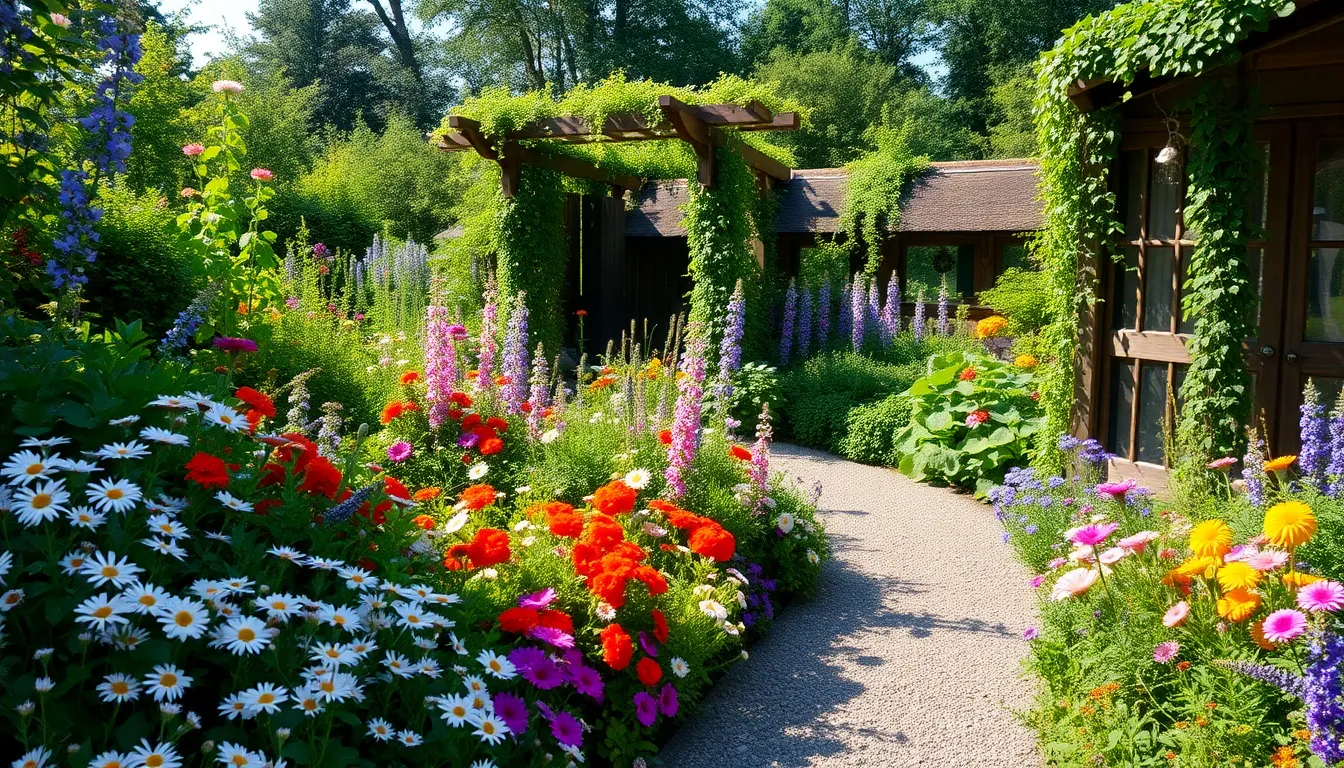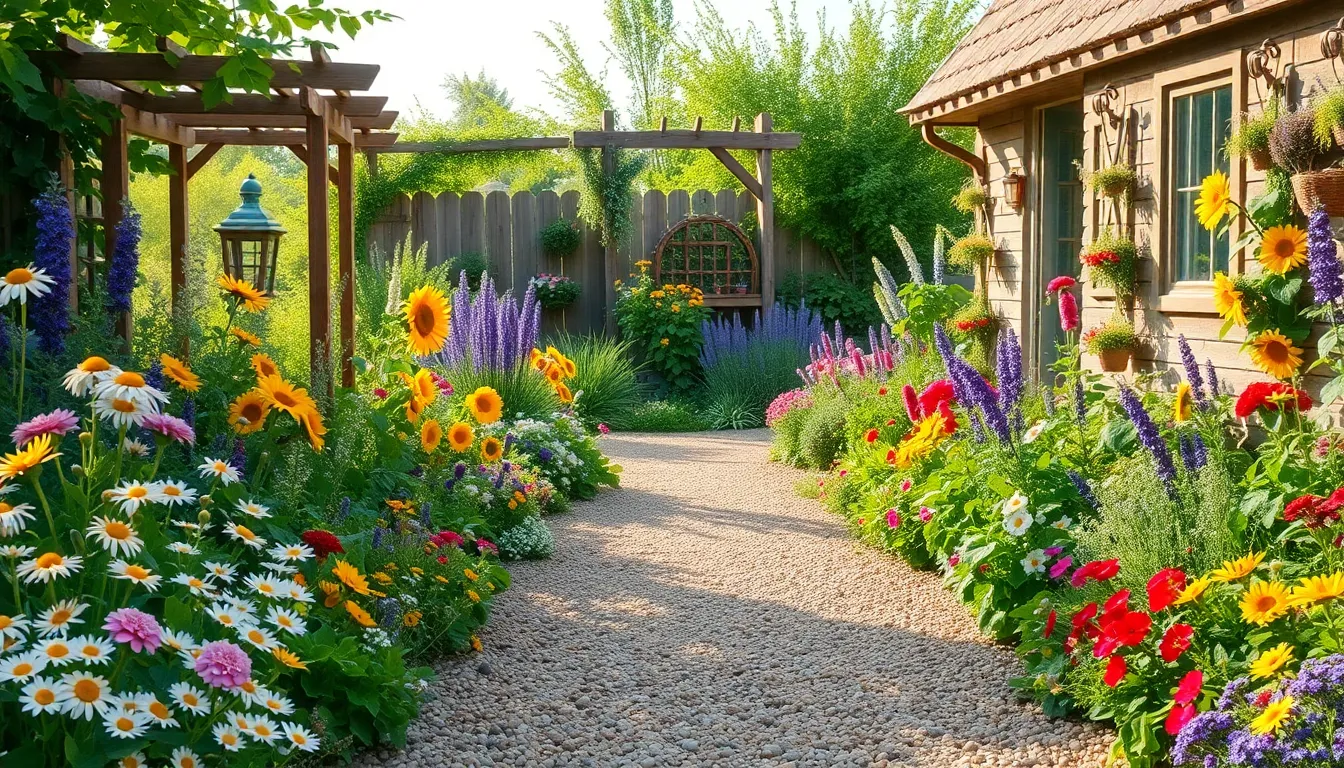Cottage garden design has a way of pulling at the heartstrings, doesn’t it? Imagine wandering through a whimsical space overflowing with vibrant blooms, quirky structures, and an enchanting charm that feels like stepping into a storybook. This style isn’t just about aesthetics: it’s about crafting a personal oasis that speaks volumes of beauty, nostalgia, and a touch of the wild. If you’re ready to transform your outdoor space into a delightful refuge, buckle up. We’re about to explore everything from the historical roots of these picturesque gardens to practical tips for maintaining their irresistible appeal, all while ensuring you have a bit of fun along the way.
Cottage Garden Design

Historical Background and Origin
Cottage gardens have a charming history that dates back to medieval England. They were originally planted by rural families to maximize the productivity of small plots and often included vegetables, herbs, and flowers. These gardens were practical, providing sustenance while also reflecting the personalities of their caretakers. As time passed, they evolved from utilitarian spaces into aesthetic refuges, with an emphasis on colorful blooms and diverse plantings that caught the attention of garden enthusiasts.
Key Features of Cottage Gardens
So, what truly defines a cottage garden? At first glance, these gardens appear unstructured yet harmonious. Key features include:
- Dense Planting: A mix of flowers, herbs, and vegetables packed closely together creates a lush, overflowing look.
- Curved Paths: Wandering paths lead you through the garden, inviting exploration and inciting curiosity.
- Vertical Elements: Arbors, trellises, and even old fences add vertical interest and charm, breaking the plane of the landscape.
- Wildflowers: Incorporating native plants is crucial, as they enhance biodiversity and attract pollinators.
Cottage gardens are eventually about creating a haven that feels both wild and wonderfully curated.
Design Principles for a Cottage Garden
Choosing the Right Plants
When crafting a cottage garden, the plant selection is pivotal. Start with a combination of perennials and annuals, think daisies, gladiolus, and sunflowers to inject cheer. It’s wise to include some herbs like rosemary and lavender, not just for culinary delights but also for delightful scents and textures. Don’t shy away from playing with diverse heights and forms: tall delphiniums can dance alongside low-growing sedums, creating a visual spectacle.
Utilizing Color and Texture
In the world of cottage gardens, color is king. Choose complementary palettes to evoke emotion and set the mood of your space. Soft pastels create tranquility, while bright hues offer joy and energy. Mixing textures adds depth: the roughness of stone walls juxtaposed with delicate blooms creates a tactile experience. Remember to layer textures. Mixing leaves, blooms, and garden structures can weave a tapestry that your eyes won’t want to look away from.
Incorporating Garden Structures
Paths, Borders, and Focal Points
Every garden needs a bit of personality, and structures help achieve that. Windy paths made of gravel or stone not only guide us through the garden but also add a rustic appeal. Borders can be defined using low wooden fences, hedges, or herbaceous plants, perfect for not only delineating spaces but also serving as showcases for delicate flowers. Create focal points using unique sculptures or even a birdbath: they draw the eye and invite lingering moments of appreciation.
Importance of Seasonal Interest
Maintenance Tips for a Thriving Cottage Garden
To keep a cottage garden flourishing, seasonal interest is key. Rotate plants according to seasons, ensuring there are always blooms peeking through, early spring bulbs, mid-summer roses, and fall asters. Regular maintenance, like deadheading flowers and seasonal pruning, ensures continuing vibrancy and growth.
Sustainable Practices in Cottage Gardening
Cottage gardening is also a fabulous opportunity to embrace sustainability. Composting garden clippings enriches the soil, while native and drought-resistant plants can decrease water use significantly. Incorporating rain barrels for collection can nourish plants during dry spells while conserving water usage. These practices not only protect the environment, but they also promote healthier plants.

